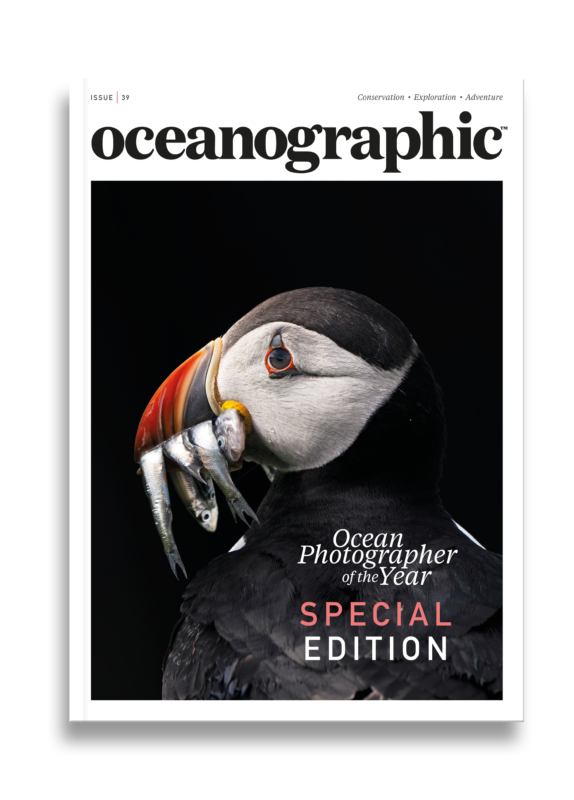Severe bleaching leaves swathes of coral on brink of death
Conservation groups have called for the "strongest response from government" while the environment minister has called for an urgent briefing to understand the full extent of a mass coral bleaching event documented across Ningaloo Reef, West Australia.
West Australia’s environment minister, Reece Whitby has called for an urgent briefing to understand the full extent of damage to Ningaloo Reef following documentation of a widespread coral bleaching event that has left conservationists demanding “the strongest response from government”.
Footage has captured the extent of a bleaching event, turning Ningaloo Reef’s once vibrant coral colonies a ghostly white, across some of its most iconic sites including Turquoise Bay, Coral Bay, Tantabiddi, and Bundegi, all said to be caused by a vast underwater heatwave.
The marine heatwave – the cause of the mass destruction – has moved its way down the West Australia coast, killing tens of thousands of fish on Pilbara coast and bleaching the iconic Ningaloo Reef, an event that has been described as “heartbreaking” by those in marine conservation.
“To see beautiful coral reefs bleaching white at Ningaloo icons, including Turquoise Bay, Coral Bay, and Bundegi, is just devastating,” said Paul Gamblin, Australian Marine Conservation Society WA director.
“Bleaching at Ningaloo is not normal. It demands urgent action from government, not business as usual. Large areas of coral could die in the weeks ahead. This is a red alert moment for Ningaloo.”
Stark images of coral bleaching at the southern end of the Ningaloo Marine Park, a World Heritage Site some 1,200 kilometres north of Perth, emerged over the weekend. It’s well established that a healthy marine environment is crucial for coastal communities that rely on not only the tourism they bring but the sanctuary they provide for a vibrant and abundant marine life.
Environment minister Mr Whitby has requested an “urgent briefing” from the Department of Biodiversity, Conservation, and Attractions to “better understand the full extent of the damage and what can be done in response”. Already the department has confirmed the bleaching is linked to sea temperatures that have been recorded at two to three degrees Celsius above the long-term average in the Gascoyne.
ABC News reports a department spokesperson to have said: “As early as last week, DBCA and collaborators have been speaking with the local community to gather further insights.”
There are fears, however, that the marine heatwave will only continue to surge along the coast of West Australia, “raging like an underwater bushfire”.
“We called for the WA government to address this destructive marine heatwave weeks ago after the fish kill, and there has been silence at the ministerial level. Surely now that there is such widespread bleaching at Ningaloo, someone in government will step up,” continued Gamblin.



Nature photographer, Brook Pyke has been responsible for bringing much of the extent of the devastation to the public eye, capturing ‘shocking’ imagery and footage of the bleached white coral across the Tantabiddi Sanctuary Zone, her once favoured spot to swim.
“I’d seen some photos from a few weeks ago, which didn’t look that bad, but I was pretty shocked at what I saw,” the Exmouth resident told ABC News.
“Tantabiddi has some of the most healthy coral density – some of the porite corals are huge and hundreds of years old. I’ve lived here for five years – I’ve only ever noticed pockets of isolated bleaching here.”
With marine heatwaves of varying severity identified in Australian waters over the last year, a study published in summer 2024 recognised that coral reefs do have the potential to recover from bleaching events caused by heatwaves, and other disturbances, as long as there is enough time.
Based on data gathered over the course of 30 years at the remote Scott Reefs, located between West Australia and Indonesia, the Australian Institute of Marine Sciences (AIMS)-led research found cycles of collapse and recovery, during which coral numbers crashed and then slowly regenerated.
At the time of the study, AIMS coral scientist, Dr Luke Thomas, said the finding offered a glimmer of hope for reefs to bounce back from such events.
“It speaks to the resilience of these ecosystems that there’s this inherent ability to recover from disturbances,” he said. “The catch is that enough time needs to pass for them to recover. When bleaching events happen every year, as is forecast for the future, that’s another story. If there are recurrent disturbances and the corals can’t recover – these ecosystems will collapse.”
And this is very much the concern of conservationists now observing the widespread impact of the latest marine heatwave who have now highlighted the urgent need to assess the status of bleaching at West Australia’s offshore coral reefs, including Scott Reef and the Rowley Shoals.
“It’s time we listened to our scientists who have been warning for decades that climate change would threaten Ningaloo as it already has the Great Barrier Reef and many other coral reefs around the world,” said Gamblin. “WA’s spectacular coast, so core to our identity and economy, is clearly not immune to the destructive impacts of climate change.
“Governments should be reducing pressure on our stressed marine environment, not piling it on. They should not even be contemplating industrial development at special places such as Exmouth Gulf, Ningaloo, and oil and gas drilling at Scott Reef.”


"*" indicates required fields
Printed editions
Current issue
Back issues

Back Issues
Issue 39 Special Edition: OPY2024

Back Issues
Issue 37 Wild Alaska: River & Ocean
Enjoy so much more from Oceanographic Magazine by becoming a subscriber.
A range of subscription options are available.








